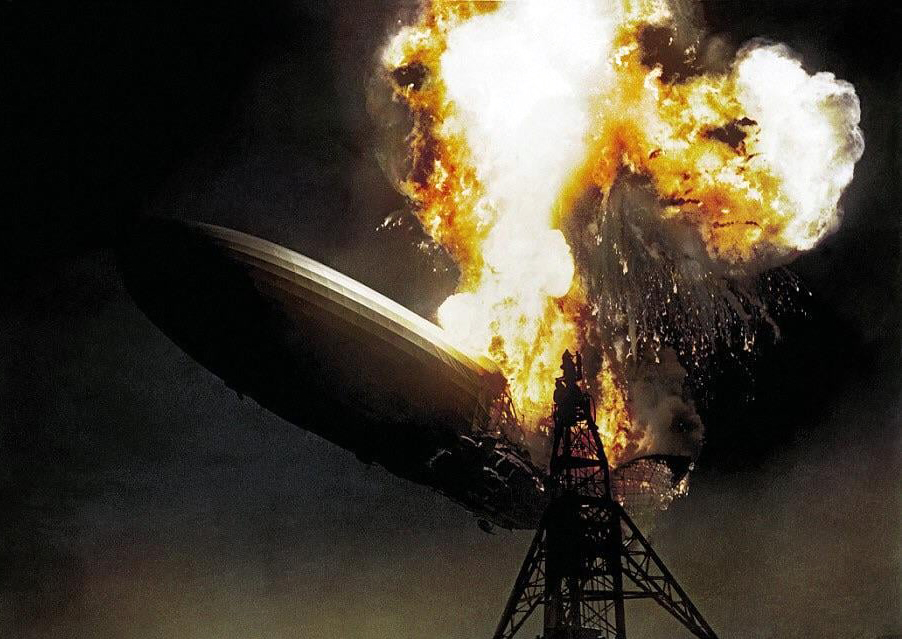|
 |
|
The Hindenburg
May 6, 1937 - Lakehurst, NJ.
After completing a transatlantic flight, approximately four minutes after it dropped its first anchor rope1,
the upper rear tail section of the LZ129 Hindenburg Zeppelin, the world’s largest airship at the time, burst into flames as it erupted in a spectacular hydrogen
gas fueled explosion that completely destroyed the vessel. The event was significant in that it dealt a blow to Nazi engineering pride as the zeppelin bore the
infamous Swastika on its tail fin, and iconographic tracking reveals that the meaning of the catastrophe is still
under debate, as speculation still exists as to whether the disaster occurred due to mechanical failure or intentional sabotage.
Visual evidence supports that the iconic image occurred naturally, and that human input from many
different disciplines came together to create an organically occurring form of visual rhetoric
with a polysemy of suggested (perceived) elements, to include suggestions that the airship was the victim of a terrorist attack. Theories of sabotage have also
contributed to perceptions of suggested elements, in conjunction with those of a naturally occurring event, to combine into a
hodgepodge of theoretical suggested elements limited only by one’s imagination. |
|














